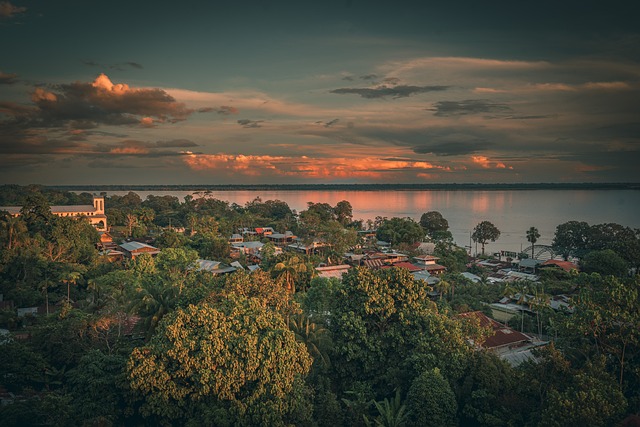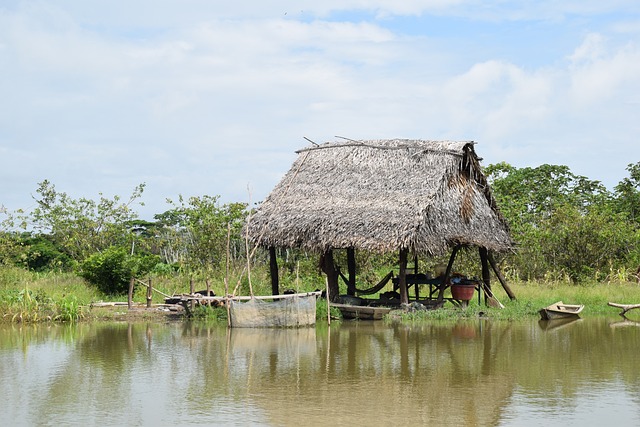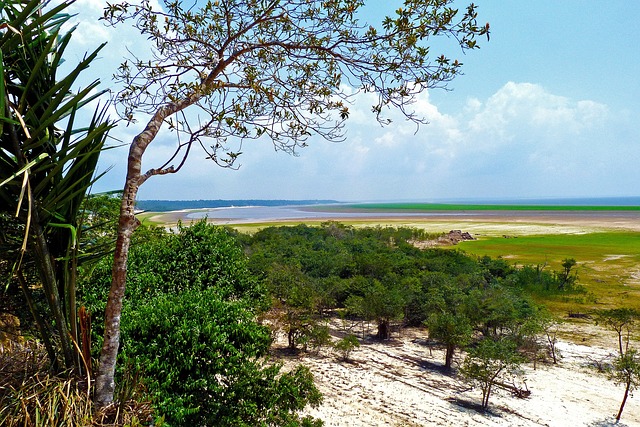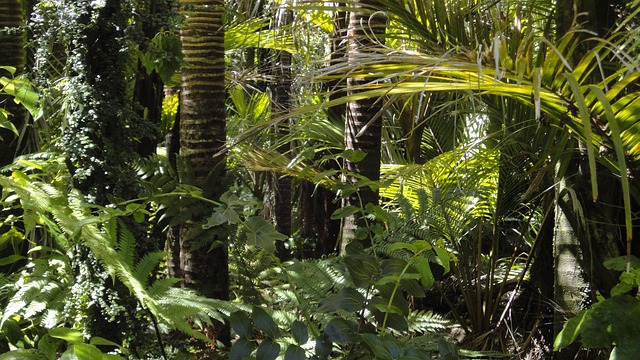The Amazon Rainforest, located in the Amazon Basin of South America, spans 7 million square kilometers. The rainforest crosses eight countries: Brazil (which contains 60% of the forest area), Colombia, Peru, Venezuela, Ecuador, Bolivia, Guyana, and Suriname. It accounts for half of the world’s rain-forests and 20% of the world’s forest area, making it the largest and most biodiversity tropical rainforest on the planet. Therefore, the Amazon Rainforest is also known as the “Lungs of the Earth.” This issue will mainly introduce the experiences and reasons for visiting the attractions in the Amazon Forest Park.
The Magical “Freshwater Sea”
The Amazon River discharges 184,000 cubic meters of water per second into the Atlantic Ocean, which is one-fifth of the total freshwater discharge from all the rivers in the world. From the mouth of the Amazon River to a point where the shore is no longer visible, the ocean water is not salty. Even 150 kilometers away, the salinity of the seawater remains quite low, earning it the name “freshwater sea.”

The Most Diverse Biological Resources
The Amazon Rainforest is home to the world’s richest and most diverse biological resources, including millions of species of insects, plants, birds, and other wildlife, many of which remain undocumented by science. The lush vegetation includes various tree species such as mahogany, laurel, palm, acacia, rosewood, Brazil nut, and rubber trees. Mahogany and Amazonian cedar provide high-quality timber. Major wildlife includes jaguars, manatees, tapirs, red deer, capybara, and many rodents, as well as numerous monkey species. It is known as the “Kingdom of Flora and Fauna” and, given that it occupies half of the world’s rainforest area, it is also called the “Lungs of the Earth.”

Unique Aspects of the Amazon
- Fishing for Piranhas and Eating Piranhas
- This is one of the most thrilling activities on the Amazon River, attracting many adventurers who come specifically to try it.
- Watching the Confluence of Black and White Waters
- The rivers in the Amazon Basin have three main types of water: white water, rich in sediment, flowing from the west; black water, colored by acidic substances from the soil, flowing from the Guiana Highlands to the north; and clear water from the southern rivers. When these waters meet, they do not immediately merge, forming a two-colored parallel flow for several miles, hence the term “black and white waters.”
- Pink Dolphins
- The Amazon River is home to the world’s unique pink dolphins. Even if you are already navigating the river, you need good luck to spot them.
The Lifestyle of Indigenous People

If you are worried about whether the indigenous people in the scenic area might be hostile, you can rest assured that they are very friendly. They are specially invited “pygmy tribes” who fully reenact the lifestyle of indigenous people. Within the park, you can see authentic replicas of tree houses, river houses, and jungle hunters, and observe the once-glorious but now mysteriously vanished Mayan civilization ruins. The totem sculptures (all sourced from South America) offer a glimpse into this fascinating history.

Hands-On Leisure Activities
In the scenic area, there are various leisure activities such as paddling bamboo rafts, riding tandem bicycles, having tea on floating islands, fishing, and mountain exploration. You can fully manage your time and choose activities according to your preferences. The park staff mentioned that future developments would include orchards, chicken farms, and tribal villages to enhance participation, making the park a new concept of “visitor self-creation” attractions. The park also offers scheduled performances that are more rustic and primitive than those in other theme parks. Authentic performances, sacrificial rituals, and large bonfire parties on the central stage provide a sense of harmony and integration with nature throughout the day’s journey.